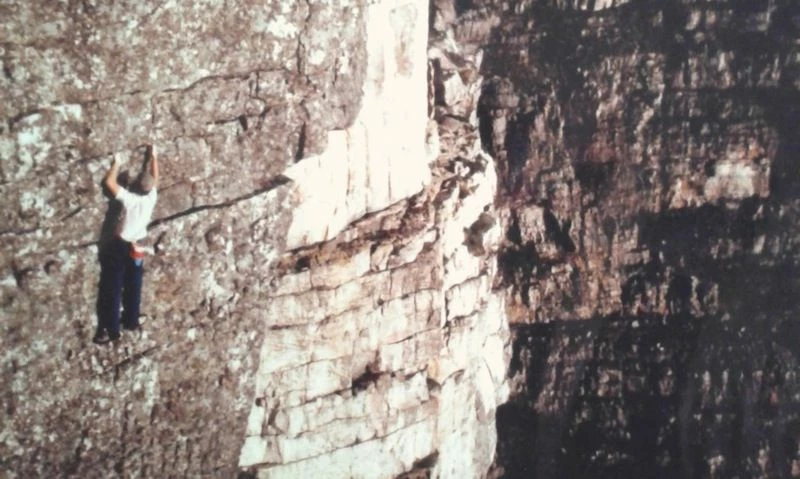
Partner Article
Defining entrepreneurial success
A recurring litany when referring to entrepreneurs is the high failure rate, writes Simon Middleton, director at Watershed Entrepreneurs.
Try to define ‘what it takes’ to make a success of an innovative idea and you will find an array of hypothetical models of attributes, psychological profiles, traits…as well as motherhood and apple-pie comments about what makes for a successful entrepreneur.
Yet how often is a rigorous de-risking process emphasised? Successful investors will tell you that they invest in the people so we assume that they invest well in the process of assessment. There remains a high failure rate nevertheless and this begs the question around the topic of “rigour”. Is there a solution? We know there is.
We use as an analogy one of our colleagues who, 32 years ago, did a solo ‘fingers and toes’ traverse of the front face of Table Mountain, Cape Town. At the time Andrew was 18 years old. He runs his own business in Johannesburg, South Africa.
Prior to making this traverse Andrew had thoroughly researched, practiced and managed all the elements that might destabilize him. He had gone through the most rigorous de-risking process before he ventured. He worked it out for himself.
The life-giving differentiator on this occasion was how to provide his mind with the emotional ecology that ensured he was focused on the process and not on the absence of supporting equipment. To focus on the negative in this challenge creates fear which, in pure physiological terms would be disastrous.
The risk of failure was always there - but the percentage had been profoundly lowered by his rigorous attention to detail - skill-wise, external climbing conditions, physical and mental preparedness.
This level of de-risking is based on orthodox competency insight that has been around in both theory and application from the 1940’s. ’Past behaviour is a good predictor of future behaviour“, means using insights into human behaviour that work off this simple psychological truth.
Take the case of Andrew. We know for a fact that in terms of a successful climber behaviour, he demonstrated capability more than the ordinary. Failure would have ended his life.
He is not “average”. Rather he is exceptional - and it is this level of performance that holds our interest.
We know that if we interviewed Andrew and a sample of climbers who achieved similar levels of excellence, we would be able to derive a statistically validated behavioural profile. This would show us the levels of coping behaviour (or competence) needed by a person to replicate his success.
Using experience taken from the commercial world of competency profiling we could predict a high level of performance success where we recruited a mountaineer with a similar behavioural profile.
In fact the level of predictability is sufficiently compelling to suggest that a savvy business leader would insist that all the strategic roles (the ones that ensure the sustainable execution of the strategy at all levels within the system) are subjected to this discipline. It is precisely this insight that can identify and de-risk the successful entrepreneur.
It would be fair to say that most consultants will talk a good game when it comes to this technology. However there are few who understand the power and criticality of this discipline. The result is a usual “mish-mash” of approaches which are next to useless in predicting and ensuring high performance.
Creating an Entrepreneurial Competency Profile means identifying, in detail, the coping behaviour used by successful entrepreneurs. Deconstructing this into levels of granularity can take days to evaluate and codify, however the result of this analytical work is a robust profile not of a mountaineer, but instead, an entrepreneur.
The value of the resulting insight is that within very high levels of predictability - upwards of 70% - one can predict whether a person is likely to succeed as an entrepreneur. Intriguingly, it is possible to gather sufficient insight at an early age - before 20 years old - whether there is an “entrepreneurial predisposition”.
Being in a position to make a comprehensive comment on the competency levels an individual has for executing the required tasks expected of an entrepreneur is of enormous significance to an investor.
We know there are three distinct phases that arc over the commercialization process. Each one requires a distinctive set of necessary behaviours. The value of this insight is the capacity to identify which phases will challenge the entrepreneur the most and where an investor needs to potentially find additional people to augment the competency set of the entrepreneur.
Creating an ecosystem in which an entrepreneurial idea thrives starts with de-risking the people involved and ensuring that a sustainable team of people are brought together. The innovative idea itself is secondary to the human capacity to execute it.
This was posted in Bdaily's Members' News section by Simon Middleton .
Enjoy the read? Get Bdaily delivered.
Sign up to receive our popular morning National email for free.








 Will the Employment Rights Bill cost too much?
Will the Employment Rights Bill cost too much?
 A game-changing move for digital-first innovators
A game-changing move for digital-first innovators
 Confidence the missing ingredient for growth
Confidence the missing ingredient for growth
 Global event supercharges North East screen sector
Global event supercharges North East screen sector
 Is construction critical to Government growth plan?
Is construction critical to Government growth plan?
 Manufacturing needs context, not more software
Manufacturing needs context, not more software
 Harnessing AI and delivering social value
Harnessing AI and delivering social value
 Unlocking the North East’s collective potential
Unlocking the North East’s collective potential
 How specialist support can help your scale-up journey
How specialist support can help your scale-up journey
 The changing shape of the rental landscape
The changing shape of the rental landscape
 Developing local talent for a thriving Teesside
Developing local talent for a thriving Teesside
 Engineering a future-ready talent pipeline
Engineering a future-ready talent pipeline